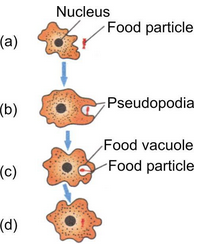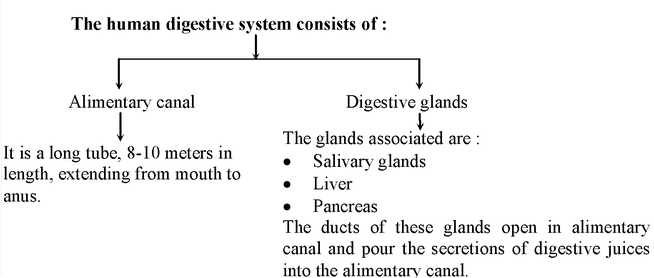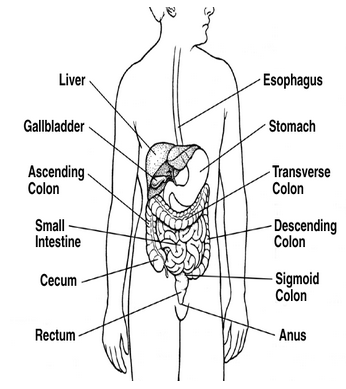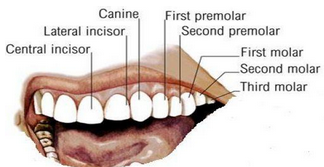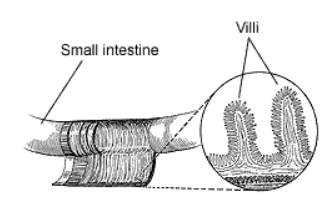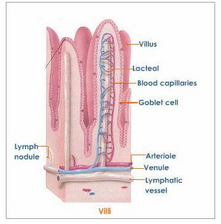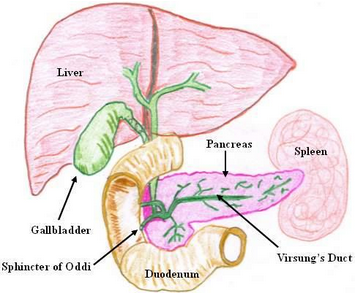
Heterotrophic Nutrition
Life Process of Class 10
Heterotrophic Nutrition
The word ‘heteros’ means ‘others’ and ‘trophe’ refers to ‘ nutrition ’. Thus, ‘heterotrophic’ means ‘nutrition obtained from others’.
In heterotrophic nutrition, the organism cannot make (or synthesize) its own food from the inorganic raw materials like carbon dioxide and water, and uses the food made by autotrophic organisms directly or indirectly i.e. the heterotroph is a consumer.
All the animals have a heterotrophic mode of nutrition. Most bacteria and fungi have also heterotrophic mode of nutrition.
The non-green plants (like yeast) are also heterotrophs.
Heterotrophs depend on autotrophs and other heterotrophs for their food. In other words, animals are heterotrophs which depend on plants or other animals for their food.
TYPES OF HETEROTROPHIC NUTRITION
A heterotrophic organism (or heterotroph) can obtain its food from other organisms in three ways:
- Saprotrophic nutrition
- Parasitic nutrition
- Holozoic nutrition
SAPROTROPHIC NUTRITION
Saprotrophic nutrition is that nutrition in which an organism obtains its food from dead and decaying organic matter of dead plants, dead animals and rotten bread, etc., ‘Sapro’ means ‘rotten’, so a saprotrophic organism draws its food from rotten leaves, dead animals and household wastes like rotten bread, etc.These organisms are called Saprophytes or decomposers.Bacteria and fungi are saprophytes.The saprophytes break down the complex organic molecules present in dead and decaying matter and convert them into simpler substances. These simpler substances are then used by saprophytes as their food. e.g. Monotropa.
PARASITIC NUTRITION
The parasitic nutrition is that nutrition in which an organism derives its food from the body of another living organism (called its host). The organism which obtains the food and shelter from another organism is called a ‘parasite’ (Para–other, site–food) and the organism from whose body food is obtained is called the ‘host’. A parasite is an organism (plant or animal) which feeds on another living organism called its host.In the relationship between parasite and host, parasite always benefitted but the host is always in harm.The host may be a plant or an animal.Parasitic mode of nutrition is observed in several fungi, bacteria, a few plants like Cuscuta (amarbel) and some animals like Plasmodium and roundworms. Thus, the micro-organism ‘Plasmodium’ (which causes malaria disease) is a parasite.
” Roundworms live inside the body of man and his domestic animals. Several fungi and bacteria, and plants like Cuscuta(Amarbel) are also parasites.Otheregs–Taenia(Tape worm), Ascaris(Round worm) etc.The parasite which causes disease is known as pathogen.
HOLOZOIC NUTRITION
It refers to the mode of nutrition in which the complex organic matter in the form of solid food is
ingested, digested and then absorbed into the cells and utilized e.g. Amoeba, frog, human being etc. In single-celled organisms, the food may be taken in by the entire surface. But as the complexity of the organism increases different parts become specialized to perform different functions.
Nutrition in Amoeba
|
Nutrition in Amoeba |
- When the tips of encircling pseudopodia touch each other, the food is encaptured into a bag called food vacuole. This step is digestion.
- The food vacuole serves as a temporary stomach secreting digestive juice.
- The digested food gets absorbed and diffuses into the cytoplasm and then assimilated.
- The process of elimination of undigested food is called egestion. Egestion of undigested food takes place at any point on the surface of the body i.e. there is no fixed anus.
- However in Paramoecium, which is also a unicellular organism the cell has a definite shape and food in taken in at a specific spot. Food is moved to this spot by the movement of cilia which covers the entire surface of the cell.
Related Topics
Differences between autotrophic nutrition and heterotrophic nutrition
|
S.No. |
Autotrophic |
Heterotrophic |
|
1. |
Organisms prepare their own food from inorganic raw materials. |
Organism gets their food prepared by autotrophs or from other organic resources. |
|
2. |
For example : Plants |
For example : Fungi and animals |
HUMAN DIGESTIVE SYSTEM
|
Alimentary Canal
- Alimentary canal in man is 9 meters long and consists of the following parts :
- Mouth
- It leads into buccal cavity. Palate forms the roof of the buccal cavity and is differentiated into anterior hard and posterior soft palate. The floor of the buccal cavity has a toungue bearing taste buds. Mucous membrane of the tongue contains taste buds which contain receptors sensitive to sweet, salty, bitter and sour taste.
|
∙ There are 32 teeth of four different types, in human adult. These are: |
Mouth showing dentition |
|
Types of teeth |
Function |
Number of teeth |
|
Incisors |
Used for biting |
4 |
|
Canines |
Used for tearing |
2 |
|
Premolars |
Used for grinding |
4 |
|
Molars |
Used for grinding |
6 |
What causes tooth decay or dental caries?
- It is caused due to bacteria which feed on sugars left in the mouth. These bacteria produce acids that dissolves the hard enamel covering of teeth, resulting in dental caries and finally tooth decay.
Pharynx:
- It is a short, conical region that lies after the mouth cavity and connects it to the esophagus.
Oesophagus
- It is a long, narrow, muscular tube which leads to the stomach. No digestive glands are present in the oesophagus. It conveys the food (bolus) to stomach through peristalsis.
- Peristalsis is a series of wave of contraction of muscles that passes from one end to the other. This pushes the food forward.
Stomach
- It lies below the diaphragm on the left side of abdominal cavity and is J-shaped.
- It is divisible into cardiac and pyloric part. The food is stored and partially digested in the stomach.
Small intestine
From the stomach the food is moved to the small intestine. It is a very long tube (7 mt. long and 2.5 cm. diameter) which originates from the distal end of the stomach and extends to the large intestine. The small intestine is the longest part of the alimentary canal and is greatly coiled and twisted. The small intestine is subdivided into three sections: the duodenum, the jejunum, and the ileum.
The duodenum (about 10 inches ) part of the small intestine is the main seat of digestion in the gut. The acidic chyme in the duodenum receives the bile secreted from the liver, the pancreatic juice secreted from the pancreas and the intestinal juice from the glands of the intestinal wall. Bile is a yellowish-green in colour, bitter in taste, slightly alkaline fluid secreted from the liver. Bile being alkaline in nature neutralises the acidic chyme. Bile emulsify fat into microscopic droplets and thus helps in the digestion and absorption of fat. So bile is called digestive juice though it does not contain enzyme. Again the pancreas, a large gland located below the stomach, secretes pancreatic juice into the duodenum through the pancreatic duct. There are three enzymes namely amaylase, pancreatic lipase and trypsin, in pancreatic juice that break down carbohydrates, fats, and proteins respectively. Glands of intestine are present in the mucous layer of the intestinal wall. These glands secrete intestinal juice, which contains various enzymes. The enzymes present in it finally convert the carbohydrates into glucose, proteins to amino acids and fats into fatty acids and glycerol.
The jejunum is about 8.2 feet (2.5 meters) long. The digested carbohydrates, fats, proteins, and most of the vitamins, minerals, and iron are absorbed in this section. The inner lining of the small intestine is composed of up to five million tiny, fingerlike projections called villi. The villi increase the rate of absorption of nutrients into the bloodstream by greatly increasing the surface area of the small intestine.
The ileum, the last section of the small intestine, is the longest, measuring 11 feet (3.4 meters). Certain vitamins and other nutrients are absorbed here
|
Villi in Small Intestine |
lacteals in Small Intestine |
Large intestine
- It has three parts – caecum, colon and rectum.
- Large intestine absorbs water and electrolytes.
Interesting Facts
- The appendix is an extra part of the large intestine that plays no part in the digestion.
- Sometimes the appendix becomes infected and has to be removed by a surgical procedure, appendectomy.
- The small intestine is more than three times as long as the whole body. In an adult, this is about 21 feet long. The large intestine is another 5 feet long. The whole tube from the mouth to the anus is about 30 feet long.
Digestive Glands
Salivary Glands
- The salivary glands secrete the first of the digestive juices, the saliva.
- There are three pairs of salivary glands, namely the parotids, sub-maxillary and sublingual glands.
Gastric Glands
- They are branched tubular glands which lie in the mucus membranes of the stomach.
- They secrete gastric juice, which is acidic, containing HCl, enzymes and mucus.
Liver
|
Liver, Pancreas and Gall bladder |
Pancreas
- It is a soft lobulated gland present in between the loops of duodenum.
- It secretes pancreatic juice containing enzymes which is poured into duodenum with the help of pancreatic duct.
- Interesting facts
- Poison glands of a snake are modified parotid salivary glands.
- Elephant tusks are modified incisor teeth of upper jaw which keep growing. Canines are absent in rodents, the gap is called diastema.
- Apetite centers and satiety centers are located in the hypothalamus.
- Gall Stones are formed by the bile salts and calcium, whose formation is promoted by high cholesterol level.
Summary of Digestive enzymes of various glands with their secretion and end products of
Digestion in Man
|
Name of gland |
Secretion |
Site of action |
Enzymes |
Food acts upon |
End product |
|
1. Salivary gland |
Saliva |
Buccal cavity |
Salivary amylase or Ptylin |
Starch |
Maltose |
|
2. Gastic glands |
GasticJuice HCl |
Stomach |
Pepsin |
Proteins |
Peptones and proteoses |
|
Renin |
Caesein of milk |
Paracaesein |
|||
|
3. Liver |
Bile |
Duodenum |
- |
Fats |
Emulsification of fats |
|
4. Pancreas |
Pancreatic juice |
Duodenum |
Amylase |
Starch and Glycogen |
Maltose and isomaltose |
|
Trypsin |
Proteins |
Peptones and peptides |
|||
|
Lipase |
Emulsified fats |
Fatty acids and glycerol |
|||
|
5. Intestinal glands |
Intestinal juice |
Small intestine |
Erepsin |
Peptones and peptides |
Amino acids |
|
Maltase |
Maltose |
Glucose |
|||
|
Sucrase |
Sucorose |
Glucose and fructose |
|||
|
Lactase |
Lactose |
Glucose and galactose |
|||
|
Lipase |
Triglycerides |
Monoglycerides and fatty acids |
|||
|
Mucous |
Large intestine |
- |
Lubrication of faecal matter |
- |

